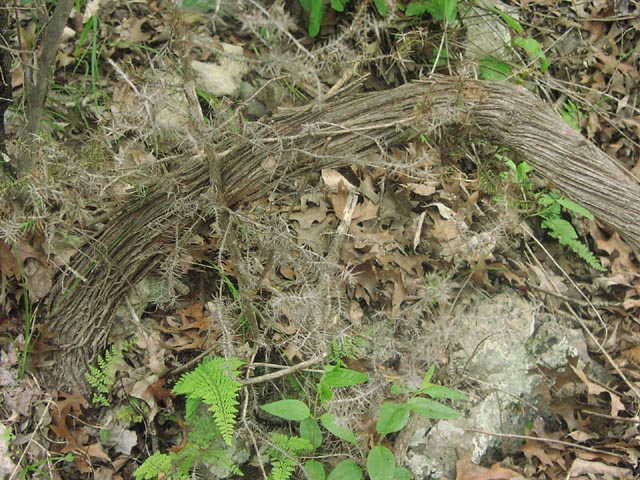|
|
 |
| leaf, showing typical leaf shape--what kind of venation is present here? Is this leaf simple or compound? | the undersides of the leaves of mustang grape are covered by a dense mat of fine hairs (a tomentum), giving the surface a whitish color |
 |
 |
| more leaves--these leaves are deeply lobed in this individual. In Vitis mustangensis, the leaves can vary greatly in the amount of lobing, even within the same individual! | leaves and tendrils--notice how the tendrils are opposite the leaves |
 |
 |
| flower buds in Spring--do you notice how the inflorescence is opposite a leaf? Just as in tendrils, the flowers (and thus the fruits) are always opposite the leaves. | developing fruit--these will ripen black or purple... |
|
|
 |
| ...as you see here. These grapes can be fairly bitter! | habit--when mustang grape gets old, it can cover up whole shrubs (like this individual) or even trees! |
|
|
 |
| mustang grape vines can grow very large, producing a thick woody trunk (woody vines are called lianas)... | ...that may extend many feet up into the trees (in other words, the first leaves that you encounter on this vine may be 20 feet up!)--watch out, Tarzan! |
| |
|
| close-up of the flowers | inflorescence a compact, compound panicle opposite the leaf |
| an individual flower | another inflorescence - here you can see the perianth parts curved back |


